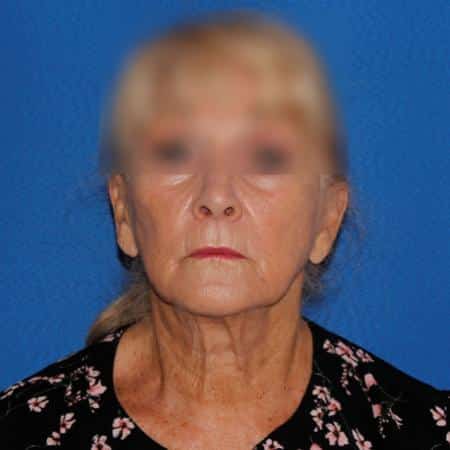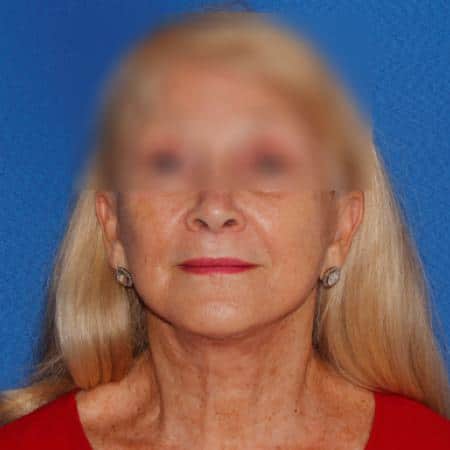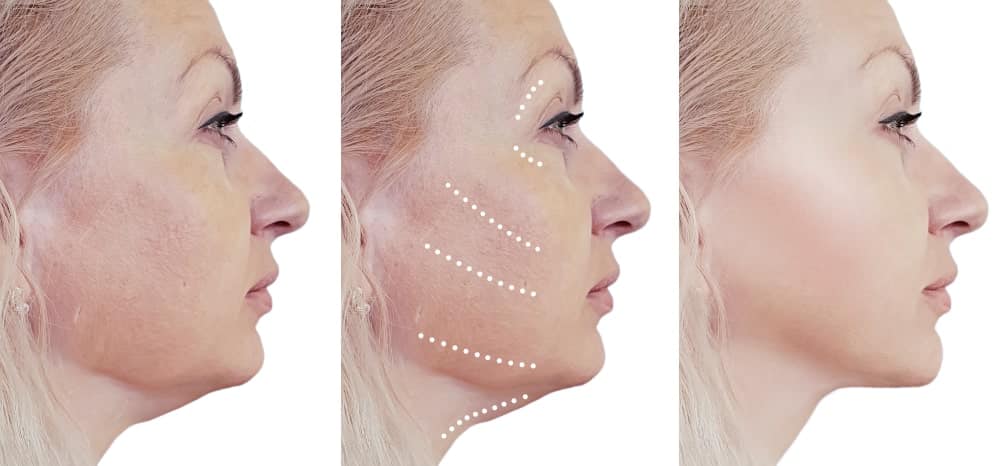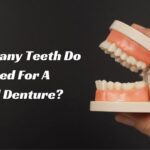Aging is unavoidable. No matter how much we want time to stand still, our facial skin will continue to droop. This is the reason for the popular decision to have a neck lift.
Women frequently turn to neck lift operations to reduce the flabbiness of extra skin and make the face and neck seem younger. “Is it normal to have puckering under chin after a neck lift?” is a question you could have if you have previously had a neck lift. You can experience soft lumps beneath your jawline in the first few weeks and worry if they are harmful.
If you are worried about your situation, you are in the perfect place since we will address some of your concerns today. However, before we address it, let’s look deeper at what a neck lift offers. To know more about neck lift without facelift, read here.
Neck Lift Surgery
Before:

After:

Lower rhytidectomy, commonly called neck lift surgery, is a cosmetic operation comprising methods and procedures to address issues with wrinkles and drooping skin in the neck region that may be brought on by aging, weight gain, or heredity.
Types of Neck Lift
Depending on the severity and reason of the drooping in the neck area, two different procedures are employed during cosmetic neck lift surgery. Cervicoplasty and platysmaplasty are the two methods of neck lift surgery.
- Cervicoplasty
The primary goal of a cervicoplasty procedure is to remove extra skin from the neck region. This method is designed for persons whose necks have skin-related wrinkles and a sagging appearance. This is why younger people are the target audience for this strategy. Typically, this procedure involves making incisions behind the ears and beneath the chin.
- Platysmaplasty
This procedure is regarded as more thorough since it is the one that reconstructs the muscles and, on occasion, also removes extra skin from the platysma region of the neck.
The left and right platysma muscles of the platysma muscle unite in the midline of the neck. A droopy and wrinkled neck is caused by the left and right platysma’s connecting fibers and the fibers attaching to the skin, weakening and losing their elasticity as we age.
Risks of Surgical Neck Lift
Surgical neck lift risks might include the following:
- Anesthesia risks, especially those related to general anesthesia
- bleeding throughout or following the surgery
- hair loss that may be temporary or permanent along incisions, especially those that are close to the hairline
- Asymmetry or unevenness on the face
- Rare nerve damage that could cause lower lip weakness
- a fluid buildup referred to as a hematoma
- infection or a wound that heals slowly
- Long-lasting edema in the treated region
- Unfavorable scarring along incision lines or where neck lift was performed
- Skin abnormalities or discolorations, such as pigmentation or hypo-pigmentation, are possible side effects.
- Skin thinning or slow healing
- Possibly visible or irritable sutures that need to be removed
- Changes in cutaneous feeling or numbness
- persistent discomfort or agony, or intermittent nerve pain
- Especially in people who smoke or have underlying medical issues, poor wound healing
- Deep venous thrombosis with cardiac or pulmonary consequences is a rare danger.
It’s also crucial to remember that any cosmetic operation can produce disappointing results and that revisional surgery or a combination of procedures may be necessary to see a more noticeable change in look. The effects of neck lift surgery might vary substantially since each patient differs.
Puckering Under Chin After Neck Lift

A frequent side effect of neck lift surgery is puckering under the chin, which usually goes away in a few weeks or months. The skin can produce a brief dimpling effect and underlying tissue tightening, which causes puckering.
In other circumstances, the patient’s naturally thin or wrinkled neck may make the puckering more obvious. A revision operation can be required if the puckering is severe or does not go away independently.
Tips to avoid puckering under chin after Neck Lift
Patients can take the following actions to lessen the possibility of puckering following a neck lift:
- Keep a healthy weight.
Putting on weight can stretch the skin and underlying tissues more, making the puckering worse.
- Don’t smoke.
Smoking can impede the healing process and harm the skin.
- Apply sunscreen often.
Sun exposure can damage the skin and accentuate the puckering.
- Massage the painful area.
The adhesions that might lead to puckering can be broken up by massaging the skin.
If you are worried about puckering following a neck lift, speak with your doctor. They can answer any concerns you may have and assist you in understanding the dangers and advantages of the process.
Scars and Incisions from a Neck Lift Procedure
To produce the finest neck rejuvenation outcomes with the least amount of scars, incisions are performed during a neck lift operation in carefully chosen locations that are frequently concealable, such as behind the ear, under the chin, or both. The procedure may significantly enhance the neck’s appearance and give you a more substantial, younger-looking jawline.
Patients may, however, be encouraged to combine their neck lift surgery with additional skin rejuvenation procedures, including:
- Laser
- Peel
- light-based therapies
- to combine their neck lift surgery with a SMAS facelift or eyelid lift procedure.
To know if you would be a better fit for a neck lift or a facelift, read this comprehensive comparison.
Recovery time after a Neck Lift

The length of your healing will depend on how comprehensive your procedure is, but a neck lift typically requires one to two weeks. Your surgeon will cover how long you will resume your regular exercise and employment. Following surgery, you and your carer will be given comprehensive instructions on how to take care of yourself, including information on:
- If installed, drains.
- Typical signs you will encounter
- Potential complications’ symptoms
You must carefully follow any advice your surgeon gives you on patient care. Understanding that everyone’s healing period is highly different is critical.
How long does a Neck Lift last?
The average patient should expect neck lift surgery results to last between 5 and 10 years or longer. The lifespan of the surgery is influenced by several variables, including:
- the condition of the skin,
- the amount of collagen present
- genetics
- general health
- surgical skill.
The maintenance you provide to your skin and health, such as shielding yourself from the sun’s damaging rays, is essential for extending the effects. To learn more about the anticipated lifetime of your neck lift surgery, it is vital to speak with your Specialist Plastic Surgeon.
Tips for healing and rehabilitation following a Neck Lift.
It’s crucial to carefully follow your surgeon’s post-operative recommendations in addition to having a support system and leading a healthy lifestyle. This can entail
- donning a compression garment
- avoiding physically demanding situations like heavy lifting,
- taking prescription medicine precisely as instructed.
In the days and weeks following surgery, you could suffer some soreness, swelling, and bruising, but these side effects should progressively disappear. It’s crucial to attend all of your surgeon’s scheduled follow-up sessions to track your recovery and treat any issues.
Remember that healing takes time, so give yourself enough of it. Returning to your regular schedule too soon may impair your outcomes and extend the healing process.
Ending Note
In conclusion, neck lift surgery may be a secure and efficient technique to enhance the neck and jawline’s look. However, it’s critical to be aware of any dangers or issues that might arise, such as puckering under chin after neck lift. Puckering is a frequent side effect that usually goes away on its own in a few weeks or months. However, a revision operation can be required if the puckering is severe or does not go away independently. Patients can reduce their chance of puckering by keeping a healthy weight, quitting smoking, and massaging the afflicted region. Be careful to discuss the dangers and advantages of a neck lift with your doctor if you’re considering surgery. Read all about neck lift after weight loss.









